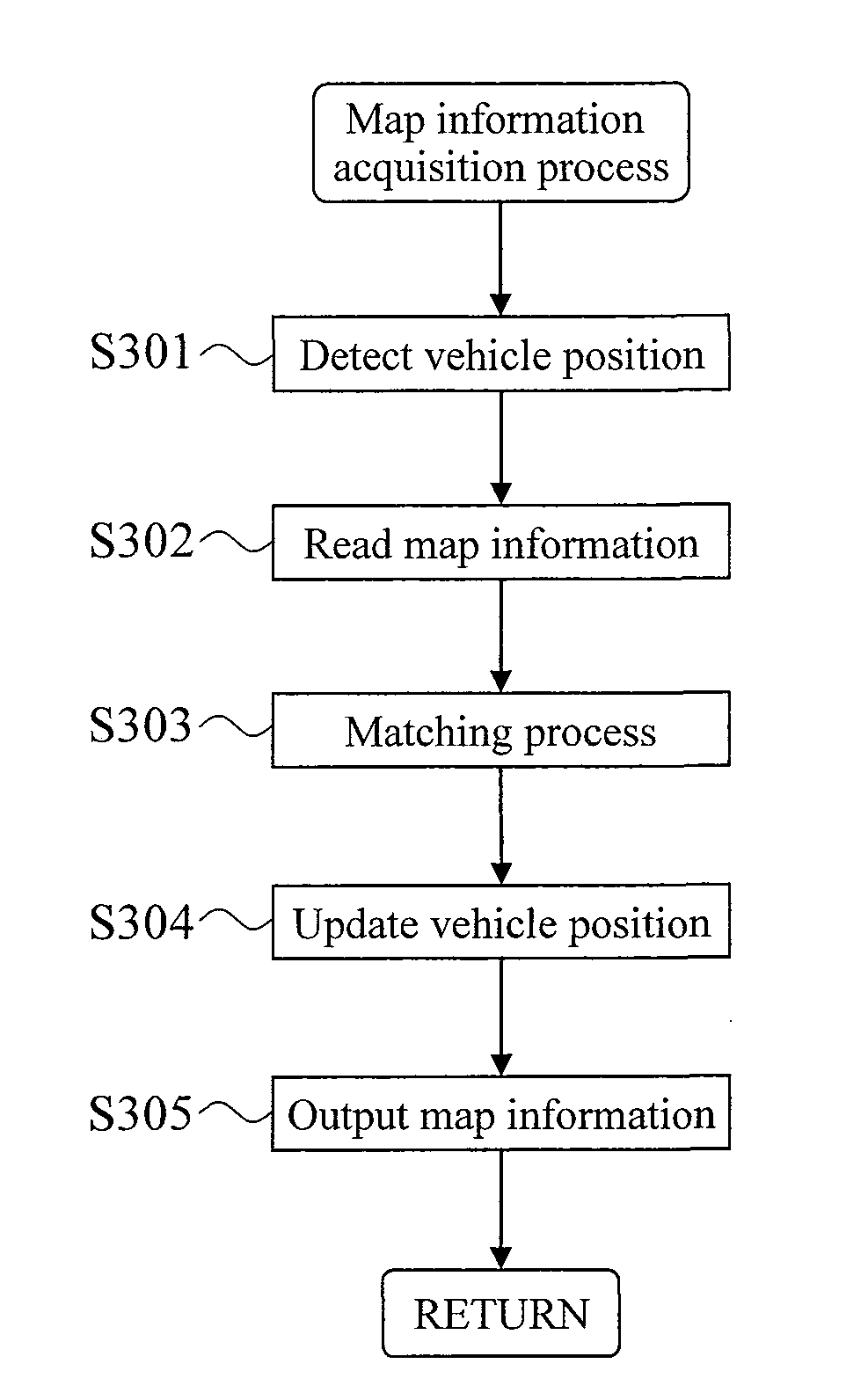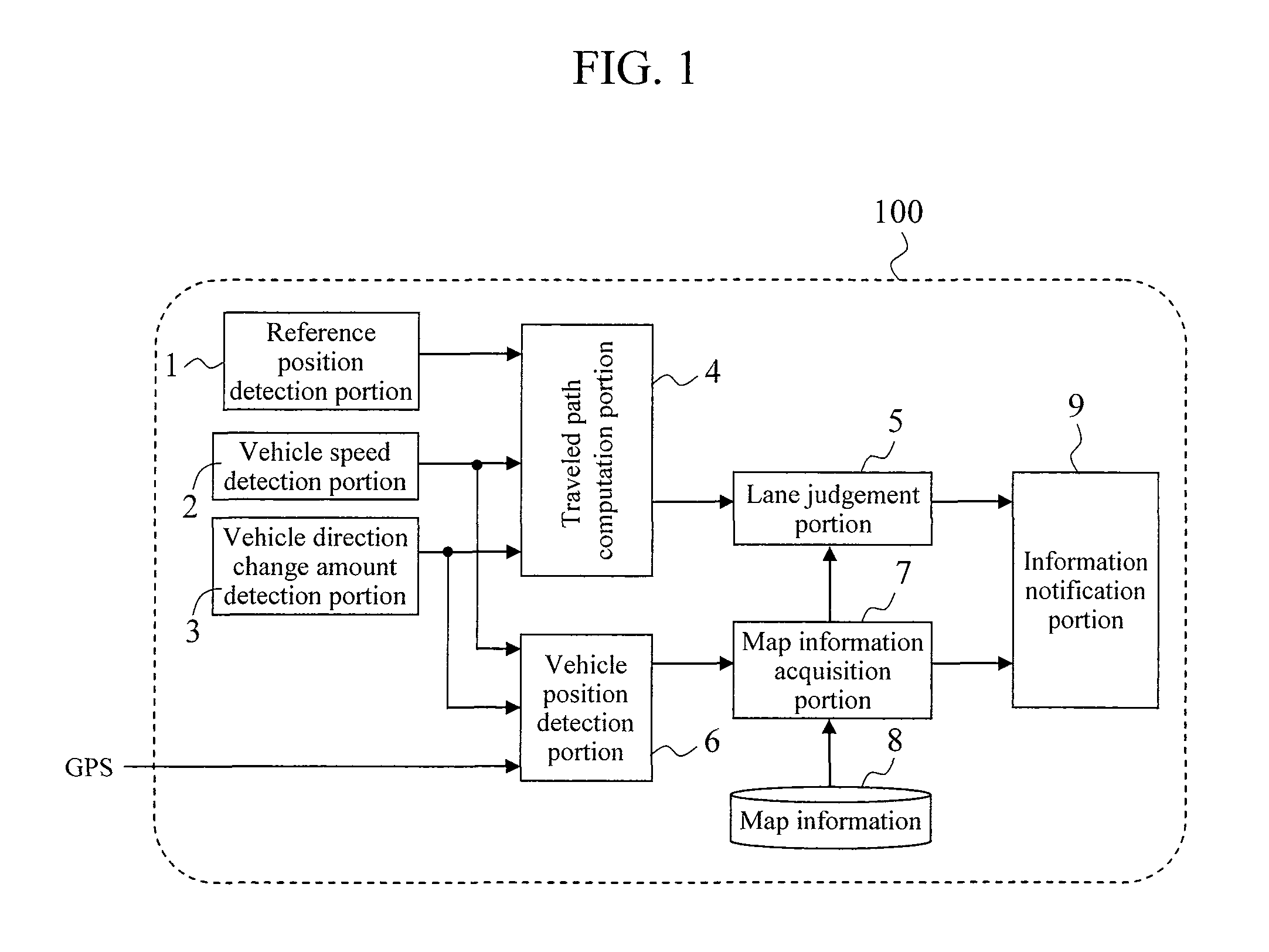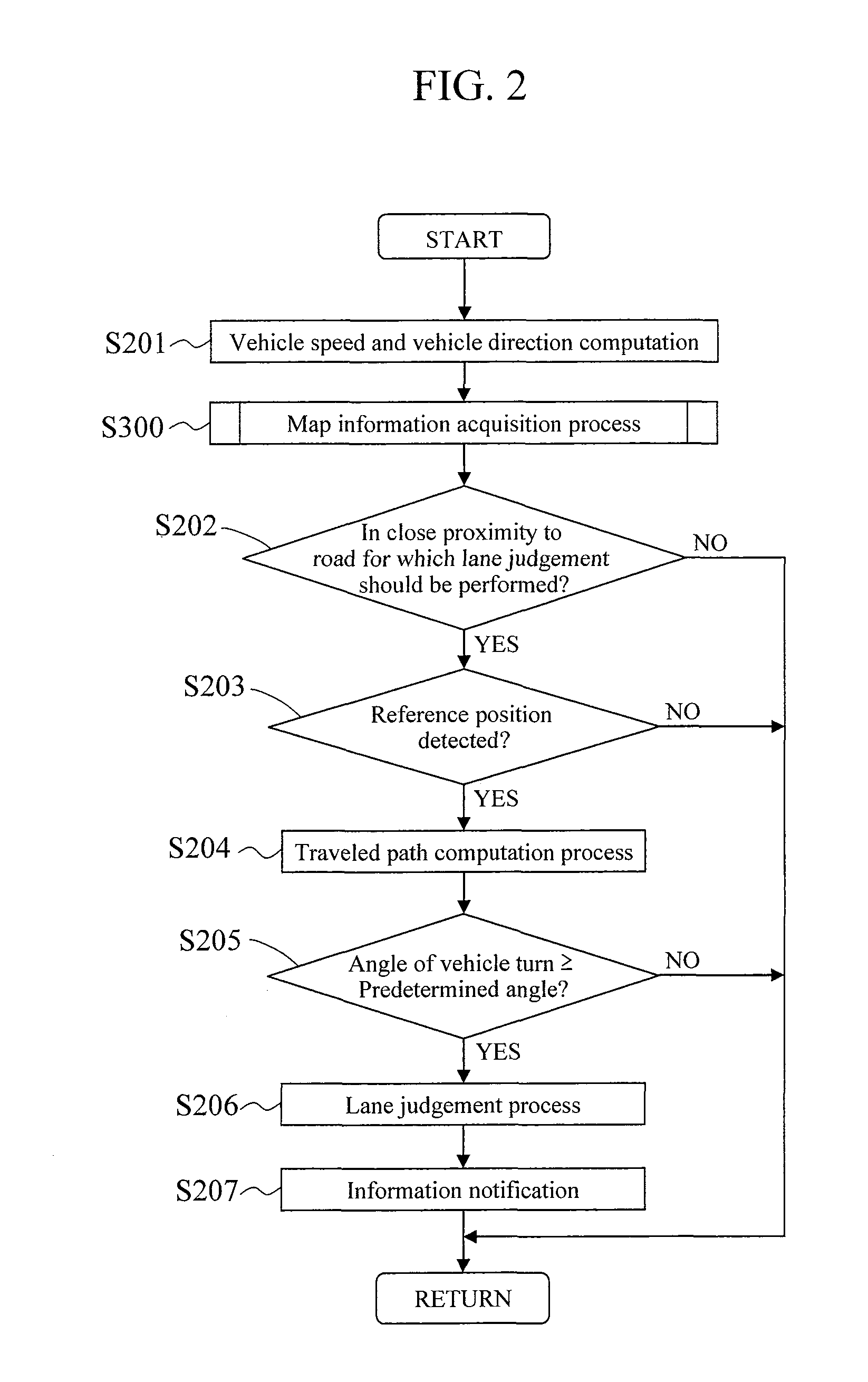Lane Judgement Equipment and Navigation System
a technology of equipment and navigation system, applied in the direction of navigation instruments, instruments, transportation and packaging, etc., can solve the problems of inability to estimate the position of the lane at intersections, the risk of losing track of the lane that the vehicle is in, and the lane position cannot be based on the white line crossing at intersections, etc., to achieve accurate determination of the lane, the effect of reducing the distance traveled before the lane traveled is judged and reducing the accumulation of errors
- Summary
- Abstract
- Description
- Claims
- Application Information
AI Technical Summary
Benefits of technology
Problems solved by technology
Method used
Image
Examples
example 1
[0097]Next, using FIG. 5, a specific example of a lane judgement process of the navigation system 100 will be described in relation to a certain road condition.
[0098]FIG. 5 is a diagram illustrating a case in which, at intersection C where road A with one lane in each direction and road B with three lanes in each direction intersect, the vehicle 400 that is traveling on road A with one lane in each direction enters road B with three lanes in each direction by making a left turn at intersection C. It is noted that the vehicle 400 in this case travels through, in order, spots P1, P2, P3 and P4 to follow the path indicated with a solid line 401.
[0099]First, when the vehicle 400 is at spot P1, it is judged based on map information whether or not this spot P1 is in close proximity to a road for which lane judgement should be performed. Since road B which is about to be entered is a road with three lanes in each direction, it is judged that the vehicle 400 is in close proximity to a road ...
example 2
[0110]Next, using FIG. 6, Example 2 of a lane judgement process of the navigation system 100 will be described in relation to a certain road condition.
[0111]FIG. 6 is a diagram illustrating Example 2, indicating a case in which the vehicle 400 enters arterial road B with three lanes in each direction from alley D which is a narrow alley. It is noted that the vehicle 400 in this case travels through, in order, spots P1, P2, P3 and P4 to follow the path indicated with a solid line 501.
[0112]First, when the vehicle 400 is at spot P1, it is judged whether or not this spot P1 is in close proximity to a road for which lane judgement should be performed. Since road B is a road with plural lanes in each direction, it is judged that the vehicle 400 is in close proximity to a road for which lane judgement should be performed (YES in step S202), and the detection of a reference position is initiated. This judgement, as in Example 1, need only be performed in the vicinity of the entrance to roa...
example 3
[0119]Next, using FIG. 7, Example 3 of a lane judgement process of the navigation system 100 will be described in relation to a certain road condition.
[0120]FIG. 7 is a diagram illustrating Example 3, indicating a case in which a vehicle 700 enters arterial road B with three lanes in each direction from alley D which is a narrow alley. It is noted that the vehicle 700 in this case travels through, in order, spots P1, P2, P3 and P4 to follow the path indicated with a solid line 701.
[0121]First, when the vehicle 700 is at spot P1, it is judged whether or not this spot P1 is in close proximity to a road for which lane judgement should be performed. Since road B is a road with plural lanes in each direction, it is judged that the vehicle 700 is in close proximity to a road for which lane judgement should be performed (YES in step S202), and the detection of a reference position is initiated. This judgement, as in Example 1 and Example 2, need only be performed in the vicinity of the ent...
PUM
 Login to View More
Login to View More Abstract
Description
Claims
Application Information
 Login to View More
Login to View More - R&D
- Intellectual Property
- Life Sciences
- Materials
- Tech Scout
- Unparalleled Data Quality
- Higher Quality Content
- 60% Fewer Hallucinations
Browse by: Latest US Patents, China's latest patents, Technical Efficacy Thesaurus, Application Domain, Technology Topic, Popular Technical Reports.
© 2025 PatSnap. All rights reserved.Legal|Privacy policy|Modern Slavery Act Transparency Statement|Sitemap|About US| Contact US: help@patsnap.com



